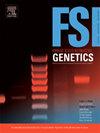人工智能在法医遗传学中的道德和安全挑战:从偏见到对抗性攻击。
IF 3.1
2区 医学
Q2 GENETICS & HEREDITY
引用次数: 0
摘要
法医科学家在根据相互竞争的假设确定证据的可能性方面发挥着至关重要的作用,这在通常由控方和辩方提出主张的法律环境中是至关重要的。似然比(LR)是一种完善的度量,用于量化证据的统计权重,便于在这些假设下比较概率。开发准确的LR模型本身就很复杂,因为它依赖于累积的科学知识。确保这些模式的透明度和严谨性对于建立信任和促进更广泛的采用至关重要。在广泛应用LRs的法医遗传学中尤其如此。最近,人工智能(AI)的整合,特别是深度学习和机器学习,引入了预测身体特征、血统和年龄的新方法。然而,与传统方法不同的是,这些人工智能驱动的方法中有许多起着“黑盒子”的作用,引起了法医学界对潜在偏见、问责制、对抗效应和其他可能导致错误结果的现象的担忧。在本研究中,我们使用模拟场景作为概念验证来说明人工智能方法的两种常见应用:(i)生物地理血统预测和(ii)亲属关系推断。我们严格审查人工智能模型可能误导法医解释的案例,这代表了道德和安全挑战。我们强调在应用这些方法时需要进行严格的评估和道德监督。本文章由计算机程序翻译,如有差异,请以英文原文为准。
Ethical and security challenges in AI for forensic genetics: From bias to adversarial attacks
Forensic scientists play a crucial role in assigning probabilities to evidence based on competing hypotheses, which is fundamental in legal contexts where propositions are presented usually by prosecution and defense. The likelihood ratio (LR) is a well-established metric for quantifying the statistical weight of the evidence, facilitating the comparison of probabilities under these hypotheses. Developing accurate LR models is inherently complex, as it relies on cumulative scientific knowledge. Ensuring transparency and rigor in these models is essential for building trust and fostering broader adoption. This is especially true in forensic genetics, where LRs are widely applied. Recently, the integration of Artificial Intelligence (AI), especially deep learning and machine learning, has introduced novel methods for predicting physical traits, ancestry, and age. However, unlike traditional approaches, many of these AI-driven methods function as “black boxes”, raising concerns within the forensic community about potential biases, accountability, adversarial effects and other phenomena that could lead to erroneous outcomes. In this study, we use simulated scenarios as a proof-of-concept to illustrate two common applications of AI methods: (i) prediction of biogeographical ancestry and (ii) kinship inference. We critically examine cases where AI models can mislead forensic interpretation, which represents ethical and security challenges. We emphasize the need for rigorous evaluation and ethical oversight in the application of these methods.
求助全文
通过发布文献求助,成功后即可免费获取论文全文。
去求助
来源期刊
CiteScore
7.50
自引率
32.30%
发文量
132
审稿时长
11.3 weeks
期刊介绍:
Forensic Science International: Genetics is the premier journal in the field of Forensic Genetics. This branch of Forensic Science can be defined as the application of genetics to human and non-human material (in the sense of a science with the purpose of studying inherited characteristics for the analysis of inter- and intra-specific variations in populations) for the resolution of legal conflicts.
The scope of the journal includes:
Forensic applications of human polymorphism.
Testing of paternity and other family relationships, immigration cases, typing of biological stains and tissues from criminal casework, identification of human remains by DNA testing methodologies.
Description of human polymorphisms of forensic interest, with special interest in DNA polymorphisms.
Autosomal DNA polymorphisms, mini- and microsatellites (or short tandem repeats, STRs), single nucleotide polymorphisms (SNPs), X and Y chromosome polymorphisms, mtDNA polymorphisms, and any other type of DNA variation with potential forensic applications.
Non-human DNA polymorphisms for crime scene investigation.
Population genetics of human polymorphisms of forensic interest.
Population data, especially from DNA polymorphisms of interest for the solution of forensic problems.
DNA typing methodologies and strategies.
Biostatistical methods in forensic genetics.
Evaluation of DNA evidence in forensic problems (such as paternity or immigration cases, criminal casework, identification), classical and new statistical approaches.
Standards in forensic genetics.
Recommendations of regulatory bodies concerning methods, markers, interpretation or strategies or proposals for procedural or technical standards.
Quality control.
Quality control and quality assurance strategies, proficiency testing for DNA typing methodologies.
Criminal DNA databases.
Technical, legal and statistical issues.
General ethical and legal issues related to forensic genetics.

 求助内容:
求助内容: 应助结果提醒方式:
应助结果提醒方式:


